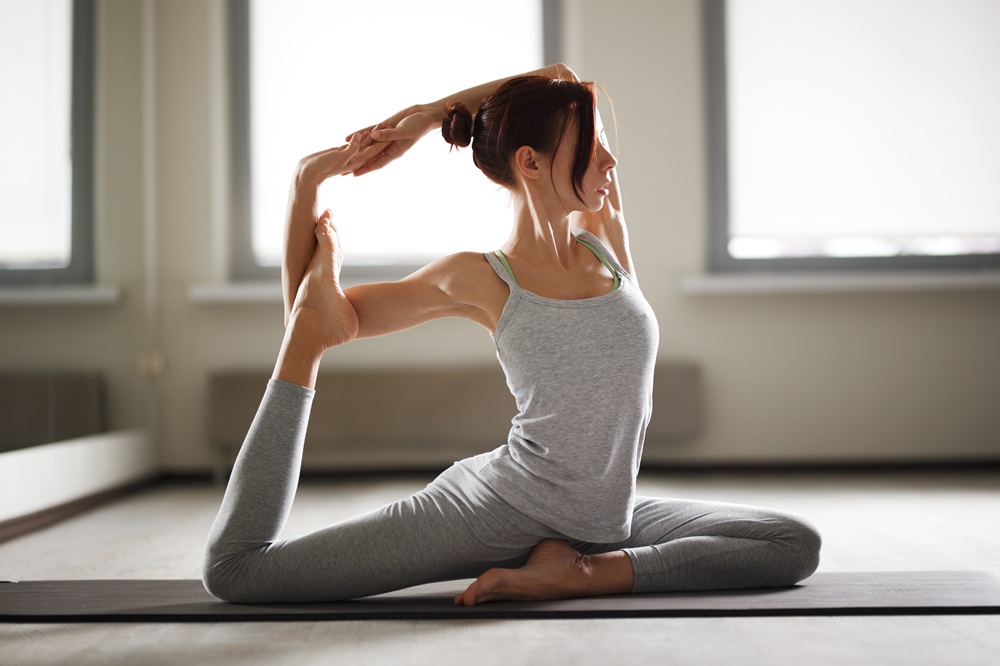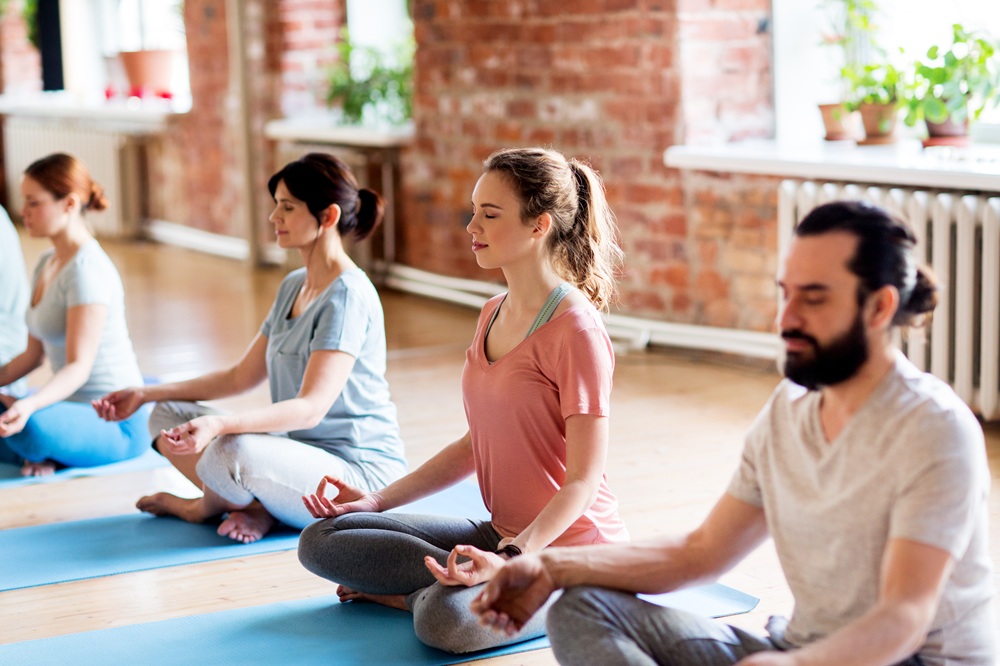Tatami Yoga and Meditation Spaces: How to Design Your Peaceful Zen Corner at Home

In today’s fast-paced world, more people are turning to yoga and meditation as ways to restore balance, reduce stress, and reconnect with themselves. As these practices grow in popularity, so does the desire to create a dedicated space at home that reflects peace, simplicity, and intention.
A thoughtfully designed yoga or meditation corner doesn’t require a spare room or an expensive makeover—it simply needs the right foundation. For many, that foundation is a tatami mat: a beautiful, functional surface rooted in centuries of Japanese tradition and perfectly suited for modern mindful living.
INDEX
- Why Choose Tatami Mats for Yoga and Meditation?
- Why Is Yoga Booming in the U.S.?
- Why Home Yoga Has Become the New Normal
- How to Set Up a Zen Corner at Home Using Tatami Mats
- FAQ – Tatami Mats for Meditation and Yoga
- Final Thoughts – Build Your Zen Space with Interra USA Tatami Mats
Why Choose Tatami Mats for Yoga and Meditation?

Natural Comfort and Support for Your Practice
The surface beneath you plays a critical role in how effective and enjoyable your practice is. Whether you’re flowing through sun salutations or sitting quietly in zazen, your mat should offer stability and comfort without being too rough or overly soft.
Unlike conventional yoga mats, which are often made of rubber or synthetic foam, tatami mats provide a firm, grounded surface with just the right amount of cushion. Interra USA’s tatami mats are crafted from Japanese woven paper—a durable, sustainable material that holds up to regular use while providing excellent support for posture and balance.
This balance is essential for poses that require alignment and core engagement. On a tatami mat, you can feel grounded and connected to the floor, enhancing your physical awareness and presence throughout the practice.
The Cultural Depth of Tatami in Mindfulness
Tatami has deep cultural significance in Japan. Traditionally found in homes, tea rooms, and martial arts dojos, it is not just a flooring material but a symbol of harmony, humility, and calm.
Bringing tatami into your home practice space introduces more than comfort—it introduces a philosophy. The act of stepping onto a tatami mat can become a ritual in itself, preparing your mind and body for intentional movement or quiet reflection. Its natural scent, texture, and aesthetic connect you with a slower, more mindful rhythm—something that many modern yoga practitioners deeply value.
Why Is Yoga Booming in the U.S.?

Yoga’s presence in the U.S. has evolved dramatically over the past two decades. Once considered a niche interest, it has now become a mainstream wellness activity practiced by over 34 million Americans. But what’s driving this trend?
At its core, yoga is versatile and inclusive. It adapts to every body type, age group, and ability level. You don’t need to be flexible or spiritual to begin—you only need curiosity and a willingness to slow down. In a culture that often prioritizes productivity and hustle, yoga offers a rare space to pause and breathe.
Additionally, scientific research continues to confirm yoga’s benefits. From lowering cortisol and stress levels to improving sleep and mobility, yoga is now recommended by doctors, therapists, and fitness experts alike. Its reputation as both a physical and emotional health booster continues to make it attractive to a wide and growing audience.
Why Home Yoga Has Become the New Normal
The shift to at-home yoga was accelerated by the global pandemic, but even as studios reopen, many practitioners are choosing to stay home. And it’s easy to see why:
- Convenience: You can practice anytime— in the morning, during lunch break, or just before bed
- Privacy: There’s no pressure to look or perform a certain way.
- Personalization: Your space reflects your own tastes and intentions.
As a result, more people are creating their own “Zen corners”—dedicated areas within their living rooms, bedrooms, or balconies where they can move, breathe, and reflect. A tatami mat serves as the perfect base for this type of space. Its clean lines and neutral colors complement a wide range of design aesthetics, especially Japandi and minimalist styles, while offering a distinct, elevated feel beyond the typical foam yoga mat.
How to Set Up a Zen Corner at Home Using Tatami Mats

Choosing the Right Space and Layout
Start with what you have. Even a small nook can be transformed into a sacred practice space. Look for an area that feels calm—near a window, beside a plant, or in a corner away from distractions.
Lay one or two tatami mats on the floor to clearly define the space. Interra USA’s modular mats are perfect for this—they’re lightweight, easy to move, and can be reconfigured based on your needs. Whether on hardwood, tile, or carpet, they create a steady, comfortable foundation.
Complementing with Japandi or Minimalist Decor
Once your base is in place, add a few key items to create a sense of peace and intention. Consider:
- A floor cushion (zabuton) for seated meditation
- A low table for candles or incense
- A neutral throw or blanket
- Soft lighting (natural light, paper lanterns, or salt lamps)
Keep the color palette simple and cohesive—think warm beiges, soft greens, and natural woods. This will help your mind settle each time you enter your Zen Corner.
FAQ – Tatami Mats for Meditation and Yoga
Q1: Can I use a tatami mat instead of a yoga mat?
Absolutely. Tatami mats provide a firmer and more stable surface than standard yoga mats, making them excellent for slow practices, meditation, and seated breathwork. They’re especially well-suited for restorative or yin yoga styles.
Q2: Will tatami mats support yoga poses?
Yes. Interra USA’s tatami mats are built to withstand daily use and offer consistent support during both seated and standing poses. Their woven texture also gives you a subtle grip without the stickiness of rubber mats.
Q3: Are tatami mats safe for hardwood floors?
Yes. The underside of our tatami mats is designed to protect delicate floors. For added peace of mind, you can place a thin rug pad underneath, especially if you’re using the mat on a slippery surface.
Final Thoughts – Build Your Zen Space with Interra USA Tatami Mats
Creating a wellness routine at home doesn’t require a lot of space or money. It begins with intention—and the right environment. A tatami mat helps you carve out a sanctuary within your home: a space where you can stretch, breathe, or simply be.
Interra USA’s tatami mats bring together tradition, sustainability, and minimalist beauty. Designed for modern homes and mindful lifestyles, they’re the perfect addition to your personal practice.
Explore our full tatami mat collection and discover how a single mat can transform your daily rituals into something extraordinary.
Reference link:
Join Yoga Alliance – More Yoga, Better World
Yoga – Benefits Beyond the Mat – Harvard Health
Yoga Journal | Yoga Poses – Sequences – Philosophy – Events
Japandi Style: Everything You Need to Know | Architectural Digest
Yoga: Effectiveness and Safety | NCCIH

